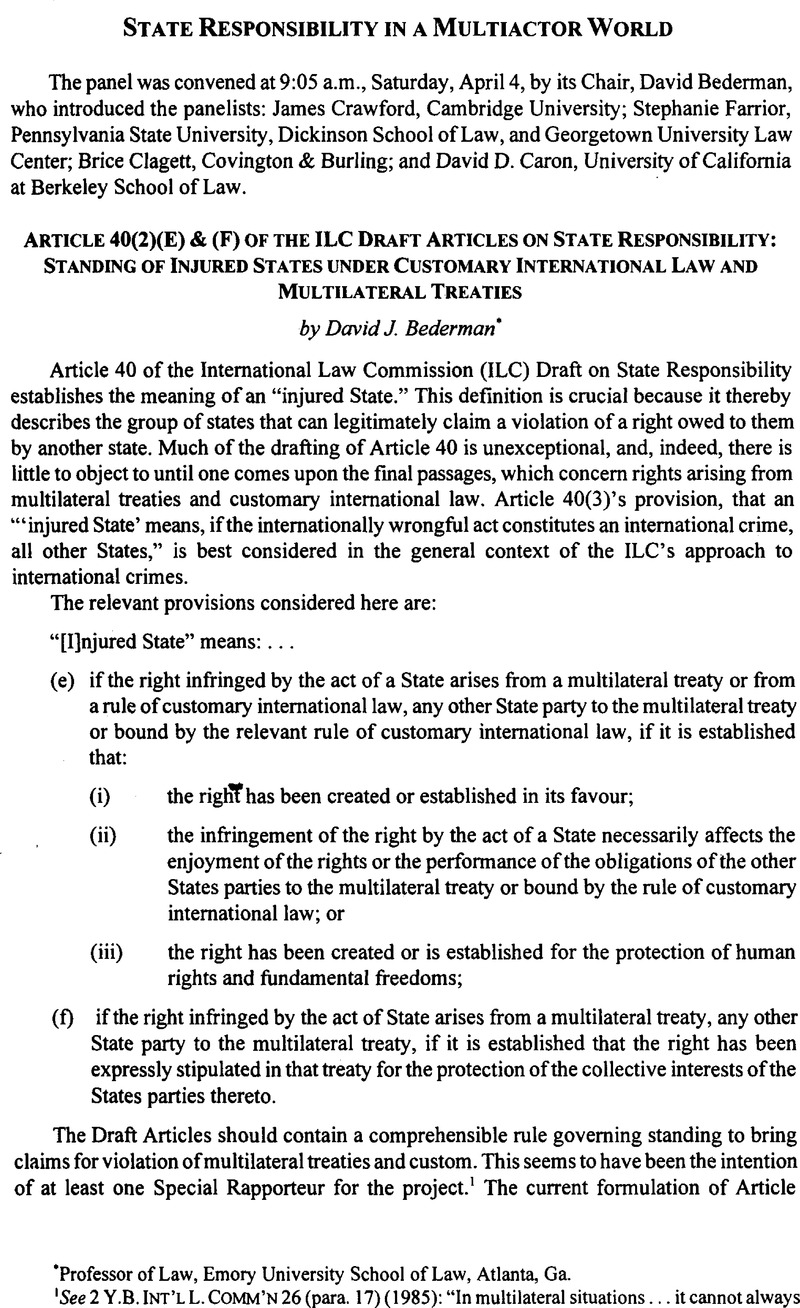Article contents
Article 40(2)(E) & (F) of the ILC Draft Articles on State Responsibility: Standing of Injured States Under Customary International Law and Multilateral Treaties
Published online by Cambridge University Press: 28 February 2017
Abstract

- Type
- State Responsibility in a Multiactor World
- Information
- Copyright
- Copyright © American Society of International Law 1998
References
1 See 2 Y. B. Int’l L. Comm’n 26 (para. 17) (1985): “In multilateral situations... it cannot always be presumed that all... States ... are ‘injured’ by the particular act.”
2 See ILC Draft, Article 40(2)(e)(i).
3 See also ILC Draft, Article 40(2)(d): “If the right infringed by the act of State arises from a provision for a third State ....”
4 See 2 Y.B. Int’l L. Comm’n 26-27 (para. 19) (1985): “[S]ubparagraph e(ii) of paragraph 2 deals with a situation of fact recognized as a special one also in the Vienna Convention on the Law of Treaties in so far as multilateral treaties are concerned (see, e.g., article 41, paragraph l(b)(i), article 58, paragraph l(b)(i), and in a somewhat different context and wording, article 60, paragraph 2(c)).”
5 See 2 Y.B. Int’l L. Comm’n 27 (para 23) (1985): “Paragraph 2(f) deals with another situation. Even if, as a matter of fact, subparagraph (e)(ii) may not apply....”
6 See id. (noting that the “common heritage of mankind” principle qualifies as such an interest).
7 Id. at para. 24.
8 Id. at para. 25.
9 2 Y.B. Int’ L. Comm’n 27 (para. 20) (1988).
10 Id. at para. 22.
11 Id. at para. 25.
12 See id. at para. 19, which makes this point.
13 The problems I have discussed in this presentation were raised in the U.S. Government’s comments on the International Law Commission’s Draft Articles on State Responsibility, at 24-26 (Oct. 22, 1997), reprinted in 37 ILM 468, 483-84 (1998).
- 1
- Cited by


